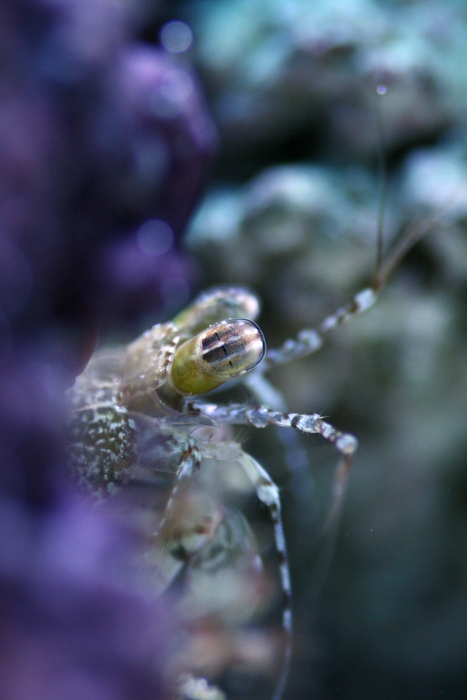Pseudopupil on:
[Wikipedia]
[Google]
[Amazon]

 In the
In the

compound eye
A compound eye is a visual organ found in arthropods such as insects and crustaceans. It may consist of thousands of ommatidia, which are tiny independent photoreception units that consist of a cornea, lens, and photoreceptor cells which disti ...
of invertebrate
Invertebrates are a paraphyletic group of animals that neither possess nor develop a vertebral column (commonly known as a ''backbone'' or ''spine''), derived from the notochord. This is a grouping including all animals apart from the chordate ...
s such as insect
Insects (from Latin ') are pancrustacean hexapod invertebrates of the class Insecta. They are the largest group within the arthropod phylum. Insects have a chitinous exoskeleton, a three-part body ( head, thorax and abdomen), three ...
s and crustacean
Crustaceans (Crustacea, ) form a large, diverse arthropod taxon which includes such animals as decapods, seed shrimp, branchiopods, fish lice, krill, remipedes, isopods, barnacles, copepods, amphipods and mantis shrimp. The crustacean group can ...
s, the pseudopupil appears as a dark spot which moves across the eye as the animal is rotated. This occurs because the ommatidia that one observes "head-on" (along their optical axes) absorb the incident light
In optics a ray is an idealized geometrical model of light, obtained by choosing a curve that is perpendicular to the ''wavefronts'' of the actual light, and that points in the direction of energy flow. Rays are used to model the propagation o ...
, while those to one side reflect it. The pseudopupil therefore reveals which ommatidia are aligned with the axis along which the observer is viewing.
Pseudopupil analysis technique
The pseudopupil analysis technique is used to study neurodegeneration in insects like ''Drosophila
''Drosophila'' () is a genus of flies, belonging to the family Drosophilidae, whose members are often called "small fruit flies" or (less frequently) pomace flies, vinegar flies, or wine flies, a reference to the characteristic of many speci ...
.'' An adult ''Drosophila'' eye consists of nearly 800 unit ommatidia which are repeated in a symmetrical pattern. Each ommatidium contains 8 photoreceptor cells each of which forms a rhabdomere (7 and 8 rhabdomere are overlapping therefore, only 7 are visible at any given plain focus). Neurodegeneration leads to loss or degradation of photoreceptors. By visualizing and counting the intact rhabdomeres, degradation level can be measured. Thus, analyzing the pseudopupil can permit empirical study of neurodegeneration.
References
Eye Arthropod anatomy {{eye-stub